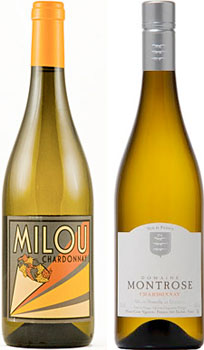| « Previous | News | Next » |
August 06, 2014
Languedoc's Dark Horse
Languedoc’s vinous past is long and storied, being the first region the Romans stopped at to teach winemaking in France. To this day, it is massively prolific, with over 700,000 acres planted to grapes—more acres than any region in the world, including the whole country of Australia. Most of that is red, and much of it is cheap and uncomplex. But increasingly, Vins de Pays wines are attracting attention for their extraordinary value. And there’s a dark horse in the race: Chardonnay.
Like the rest of Mediterranean wine country, sunshine and vines can be found in every direction. The sheer diversity of grapes grown here is immense, and, as such, most wines tend to be blends. But Chardonnay loves the gentle schist- and garrigue-covered hills, not to mention the abundant sunshine. Traditionally used in Cremant from Limoux, Chardonnay is increasingly being targeted by winemakers for more and more single-varietal wines. Chardonnay at its best in Languedoc is food-friendly, ripe, and bit wild.

Milou Chardonnay was discovered by a California-based importer called Valkyrie Selections, who went village to village in search of value-driven Languedoc wines. Winemaker Thibault Crespin sources his grapes from old vineyards in Asperes, between Nimes and Montpellier. The marl soils with clay and limestone harken back to Chablis, and, in combination with a maritime influence, an interesting element of minerality is present in this Chardonnay. The temperature-controlled, steel fermentation maintains the grapes’ freshness, and the wine is bright and fruity, with a core of balanced acidity to make it perfect for the table. Aromas of lemon, pineapple, and tropical fruit waft from the golden yellow juice in glass. It’s easy drinking, best alongside shrimp paella or scallops.
Domaine Montrose is only 15 km from the Mediterranean coast in the town of Pezenas, located on a volcano (“Mont”), surrounded by pink flowers (“rose”). Family owned since its founding in 1701, winemakers Bernard and Olivier Coste take the utmost care in the field and the cellar. All growing is sustainable. They harvest at night when it is cool to avoid grape oxidation. They gently press the grapes to extract the rich, subtle flavors of the fruit. Each parcel of grapes is vinified separately, then blended after fermentation. The Montrose Chardonnay is soft and broad, with notes of white flowers, peach, pear, and citrus. It won’t be beat on a summer picnic with cold fried chicken, a hunk of aged Parmesan, and a crusty baguette.
